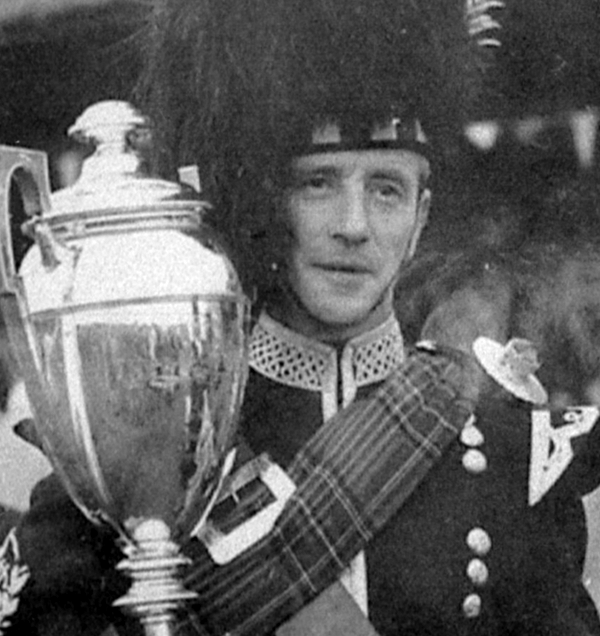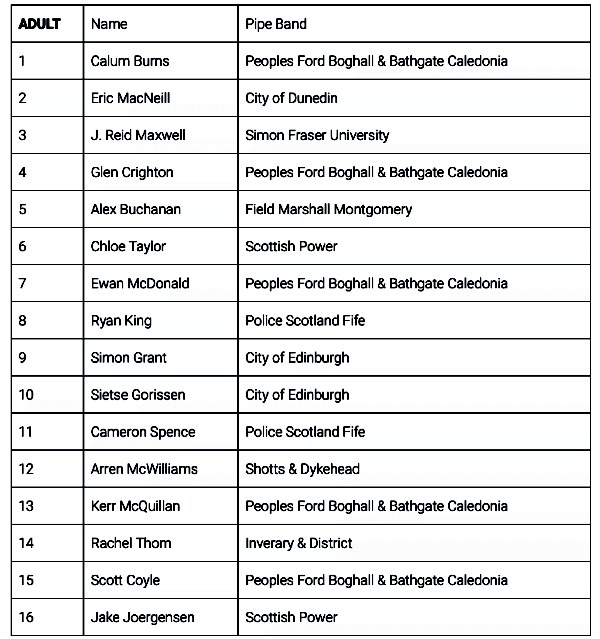
Several responses to the Bob Hardie recordings and my comments thereon published earlier this week. I agree with the message that he rushed the crunluath doubling somewhat in his Corrienessan. Maybe he felt the drones were moving. Overall an excellent rendition though.
Next up was Iain Bruce in Queensland who helpfully identified the air Bob played. Iain wrote: ‘It is Mull of the Mountains. It was often played by Bob Brown, and features on his recordings made in the early 1970s, the Pipes of Balmoral and the Cairn on the Hill.’
Thanks for that Iain. Bob Hardie did have an association with RU Brown and, as Bob’s daughter Margaret has confirmed, they would be delayed on return trips from Aberdeenshire whilst Bob visited Bob on Deeside. Maybe he picked up the tune there.
I mentioned that Bob H never used tape on his chanter. Duncan Watson responded: ‘I purchased John MacLellan’s book on maintenance published in 1967. In it there is reference to tape recommended for flattening pitch. However, as I understand, some of the pipers in the Army used an odd sort of tape before that, cutting the the glued part off envelopes. Army envelopes were usually brown in colour so it wouldn’t have looked too bad.
‘It might be of interest that there is a set of old pipes in Dunrobin Castle, Sutherland, and it appears that some kind of material similar to dried soap can be seen on the chanter holes. Undoubtedly it is something of fashion now to use tape on pipe chanters and some carry out serious surgery them too. If possible the use of tape etc should be avoided, but it seems that nowadays reeds and chanters are rarely compatible, despite advanced manufacturing techniques.’
Yes, I’ve heard of soap being used as a temporary measure before tape Duncan. Donald MacPherson was one for carving chanters but he told me that when he did so he always used shellac to restore the shape of the hole, otherwise the quality of the sound was affected.
The bottom line is that Bob Hardie never used tape. He felt it was an insult to his RG Hardie chanter – a chanter played by many leading soloists and bands in the 1960s.
Piping Tutor Job
Larkhall Youth Pipes and Drums in South Lanarkshire are seeking a piping tutor for schools in the town and surrounding area. The tutor will be self-employed reporting to an organising committee. The blurb reads, ‘Must be able to teach to SCQF Level 6 with knowledge of PDQB and have experience of teaching young people and experience of running a pipe band.
‘Must know how to engage, retain, and inspire young people, support their progress, and be ambitious for all that a school pipe band can bring to young people and the community.’ More information: gw09smithandrew11@glow.sch.uk
Canntaireachd in Brittany
A super initiative by the ABSC in Brittany. Loïc Denis reports: On Sunday 14 April 2024, nine people took part in a training day on this ancient method of oral transmission of ceòl mòr. Organised by the ABSC (Bagpipe Soloists Association Brittany). Eric Freyssinet guided us along this path.
Canntaireachd is the pibroch memorisation system used before sheet music appeared. This system has fallen out of fashion, although it is still effective for understanding the style. It is a kind of articulated language, based on a particular system of using vowels and consonants as a guide for each note or group of notes. The vowels represent the notes of the melody, and the consonants the ornamentation. These are meaningless words that tend to be ‘onomatopoeic’.

Éric was one of the private pupils of Andrew Wright. He has studied Colin Campbell’s manuscripts, from which this code is derived, in detail. He encouraged well-known musicians such as Patrick Molard to follow in his footsteps, resulting in the ‘Piper’s Meeting’ book and the emergence of previously unknown tunes. This instrumental code, only partially used today, would benefit any piper wishing to perfect expression of this music.
The day was a resounding success, enthusing the nine participants and demonstrating the usefulness and effectiveness of using canntaireachd for the study of piobaireachd.
Euro Drumming
Good luck to all those drummers (and their pipers) playing in the Euro Solos tomorrow. An impressive line-up in the Adult section:

The fun in this section starts at 1.30pm. Venue is Lochgelly High School, Fife.

























I obtained a Hardie chanter when I was a teenager. Willie MacDonald, Inverness, got it for me. I was serving my apprenticeship for Logan, the firm who built the Tay Road Bridge. I saved some money and the new Hardie chanter was £20. It lasted me for about 20 years until about 1980 and in its useful lifetime I cannot recall having to apply tape, and the thought of savaging it by gouging lumps out of the holes would not have ever been considered. The chanter served me very well in those 20 years. For some reason, incompatible reeds or some fault in me, I cannot be sure, but the chanter sound deteriorated. I tried to obtain another, but without success and had to jump ship to another well known maker. It was also satisfactory for about 20 years. I resisted and still do resist the use of tape and the process of gouging. Pipers, perhaps under the influence of the likes of Donald MacPherson, have certainly become more focused on producing sophisticated sound – has maybe been part of the reason for the rise in pitch. One can argue one way or another over the pros and cons of this. Undoubtedly we have lost something. However, the fact remains that bagpipe sound has improved in general over the last 50 or 60 years. I have a silver soled MacRae pipe chanter dated 1942. Try as I might, making reeds etc., I cannot get that chanter to produce a pleasant scale. It might be down to the dimensions of reeds, but I doubt it. I have seen one of the last reeds that GS McLennan made and the dimensions seemed much the same as a lot of reeds are made now. It would be of interest to see the pipe chanter that Donald MacPherson used for the most of his piping career. I did speak to him on an occasion that he was at Aberdeen doing a recital and asked him some questions and without going into detail. He inferred that the reed staple played a significant part in production of sound.